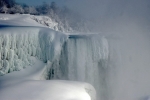I was looking at my statistics on SleepyHead and noticed some patterns.
Here is an example (screenshot of last night): https://www.dropbox.com/s/hyfk8scvzkxae ... 6.png?dl=0
1) I never have apneas and hypopneas in the first half (~ first 4 hours). In the last half I have 3 or 4 an hour. During these increased blockages I have increased leaks, probably because I can't breathe so I start mouth breathing. I've been using a chinstrap.
This leads to a good average AHI for the night (average is 1.5 over past 25 days).
Looking online it seems it's because deep sleep lets the tongue and throat relax, leading to more blockage.
2) During this problematic last half, the pressure increases. Sometimes it is close to the maximum pressure.
I think I should increase the pressure to 10-12cm (it is 9-11cm now) to try to eliminate the blocked last half of the night.
Does this make sense?
Thank you!
-appo
Increasing pressure to avoid apneas in deep sleep?
Increasing pressure to avoid apneas in deep sleep?
_________________
| Machine: ResMed AirSense™ 10 AutoSet™ CPAP Machine with HumidAir™ Heated Humidifier |
| Mask: AirFit™ P10 Nasal Pillow CPAP Mask with Headgear |
That which does not kill you makes you stronger. Me granddad refuses CPAP therapy for 30 years (he's 90), and is still sharp as a tack!
In my life, really, I'm all about wellness!
In my life, really, I'm all about wellness!
Re: Increasing pressure to avoid apneas in deep sleep?
I don't think your pressure changes will make any difference...Ignore the CAs....Pressure changes will not eliminate them. In fact, increasing your pressure may cause more CAs. Don't go looking for problems..how are you sleeping/feeling?
_________________
| Machine: ResMed AirSense™ 10 AutoSet™ CPAP Machine with HumidAir™ Heated Humidifier |
| Mask: Fisher & Paykel Vitera Full Face Mask with Headgear (S, M, or L Cushion) |
| Additional Comments: Back up is a new AS10. |
Re: Increasing pressure to avoid apneas in deep sleep?
appo,
The data your posted actually looks pretty good. Yes, there are more apneas during the second half of the night, but that's not unusual and it doesn't look like there are clusters of multiple events within a few minutes. The machine does raise the pressure in the second half of the night, but my guess is that the pressure increase is just as likely coming from its programmed reaction to flow limitations and/or snoring. Could you post the snore curve and the flow limitation curve as well as the pressure curve?
You are right, the reason that many people have more events during the second half of the night is indeed that REM cycles get longer and longer as the night progresses and many people's apnea is far worse in REM. Do you know if there was a big difference in the REM AHI vs. the overall AHI on your diagnostic sleep test?
Finally, it's worth noting that you had 5 CAs and only 3 OAs on this night. Raising the pressure is not going to do anything to prevent the CAs. The number of CAs is not particularly troubling at this point, and I would not worry about them.
So whether to raise your pressure range from 9-11 to 10-12 is more of a "comfort" issue in my opinion. My guess is that a 1 cm increase may eliminate 1 or 2 more of the OAs without increasing the number of CAs. But it's also important to understand that we don't sleep the same every night. So even with a 1cm increase in the pressures, you are likely to see a few more events during the second half of the night.
If this were my data, I would NOT increase the pressure.
The data your posted actually looks pretty good. Yes, there are more apneas during the second half of the night, but that's not unusual and it doesn't look like there are clusters of multiple events within a few minutes. The machine does raise the pressure in the second half of the night, but my guess is that the pressure increase is just as likely coming from its programmed reaction to flow limitations and/or snoring. Could you post the snore curve and the flow limitation curve as well as the pressure curve?
You are right, the reason that many people have more events during the second half of the night is indeed that REM cycles get longer and longer as the night progresses and many people's apnea is far worse in REM. Do you know if there was a big difference in the REM AHI vs. the overall AHI on your diagnostic sleep test?
Finally, it's worth noting that you had 5 CAs and only 3 OAs on this night. Raising the pressure is not going to do anything to prevent the CAs. The number of CAs is not particularly troubling at this point, and I would not worry about them.
So whether to raise your pressure range from 9-11 to 10-12 is more of a "comfort" issue in my opinion. My guess is that a 1 cm increase may eliminate 1 or 2 more of the OAs without increasing the number of CAs. But it's also important to understand that we don't sleep the same every night. So even with a 1cm increase in the pressures, you are likely to see a few more events during the second half of the night.
If this were my data, I would NOT increase the pressure.
_________________
| Machine: DreamStation BiPAP® Auto Machine |
| Mask: Swift™ FX Nasal Pillow CPAP Mask with Headgear |
| Additional Comments: PR System DreamStation and Humidifier. Max IPAP = 9, Min EPAP=4, Rise time setting = 3, minPS = 3, maxPS=5 |
Re: Increasing pressure to avoid apneas in deep sleep?
lowering the ERP setting may help with the CAs and the slight pressure increase that comes along with that may help with the OAs.
Get OSCAR
Accounts to put on the foe list: dataq1, clownbell, gearchange, lynninnj, mper!?, DreamDiver, Geer1, almostadoctor, sleepgeek, ajack, stom, mogy, D.H., They often post misleading, timewasting stuff.
Accounts to put on the foe list: dataq1, clownbell, gearchange, lynninnj, mper!?, DreamDiver, Geer1, almostadoctor, sleepgeek, ajack, stom, mogy, D.H., They often post misleading, timewasting stuff.










